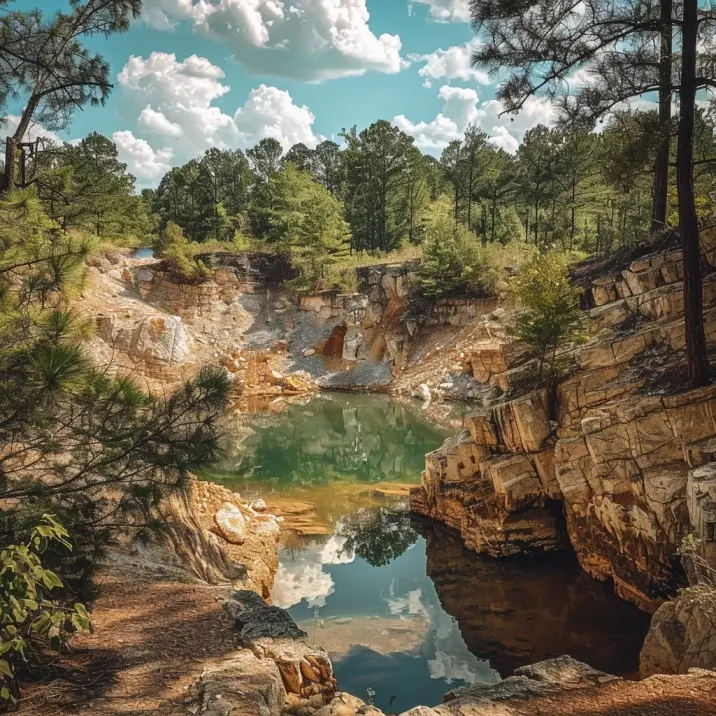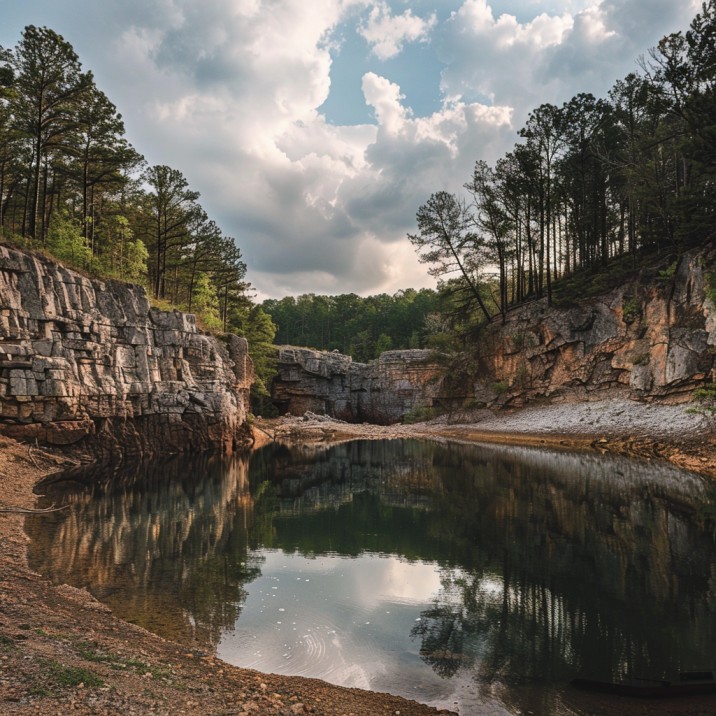Crater of Diamonds State Park in Murfreesboro, Arkansas, is a unique destination not only for its diamond-bearing volcanic crater but also for its diverse and captivating plant life. From the iconic Osage-orange to the vibrant mimosa, the park’s vegetation offers visitors a rich and engaging experience beyond the search for precious gems.
Osage-orange: The Twisted Treasure
One of the most distinctive trees found in Crater of Diamonds State Park is the Osage-orange (Maclura pomifera), also known as the hedge apple. This tree’s thick, gnarled trunk and thorny branches have become a beloved part of the park’s landscape. In late summer, the Osage-orange produces large, yellow-green, citrus-like fruits that add a pop of color to the surroundings. As the seasons change, the tree’s leaves transform into a bright yellow hue, providing a stunning display in the fall.
Beyond its visual appeal, the Osage-orange is prized for its rot-resistant wood, which has been used for generations to create tool handles, fence posts, and other durable items. The tree’s unique characteristics make it a true standout in the park’s diverse ecosystem.
Sycamore: The Majestic Shade Provider

Another notable tree found in Crater of Diamonds State Park is the American sycamore (Platanus occidentalis L.). This towering tree is easily identified by its broad, toothed leaves and distinctive grayish-brown mottled bark that peels away from the older trunks. Sycamores are commonly planted as shade trees, and their wood is often used for butchers’ blocks and boxes.
The sycamores at Crater of Diamonds State Park provide welcome relief from the sun, offering visitors a cool and serene respite as they explore the park’s diamond-bearing fields. These majestic trees add to the park’s natural beauty and contribute to the overall visitor experience.
Mimosa: The Vibrant Attraction
The mimosa, or silktree (Albizia julibrissin), is another captivating plant found in Crater of Diamonds State Park. This tree typically grows to a height of 30-40 feet and is adorned with showy pink, silky flowers that bloom in the summer. These vibrant blooms attract a variety of pollinators, including bees, butterflies, and hummingbirds, adding to the park’s rich biodiversity.
Several mimosas can be found growing behind the historic mineshaft building on the north side of the search area, providing a colorful backdrop for visitors exploring this part of the park. The mimosa’s striking appearance and ability to attract wildlife make it a beloved addition to the park’s diverse plant life.
Protecting the Park’s Vegetation
To ensure the continued health and preservation of the park’s trees and shrubs, visitors are required to dig at least 15 feet from the base of any plant in the search area. This rule helps to protect the root systems and prevent damage to the vegetation, ultimately enhancing the diamond hunting experience for all park guests.
Exploring the Park’s Diverse Flora
In addition to the Osage-orange, sycamore, and mimosa, Crater of Diamonds State Park is home to a variety of other plant species. Visitors may encounter a range of rocks and minerals, including amethyst, garnet, jasper, agate, and quartz, all of which naturally occur within the park’s boundaries.
The park’s staff are available to provide complimentary identification of any rocks, minerals, or other natural finds discovered by visitors, as well as to offer diamond mining demonstrations and other interpretive programs. These educational resources help to enrich the overall experience and deepen visitors’ appreciation for the park’s unique geological and botanical features.
Conclusion
Crater of Diamonds State Park is a true gem, not only for its diamond-bearing volcanic crater but also for its diverse and captivating plant life. From the twisted, thorny branches of the Osage-orange to the vibrant, pollinator-attracting blooms of the mimosa, the park’s vegetation offers visitors a rich and engaging experience beyond the search for precious stones.
By protecting the park’s trees and shrubs and providing educational resources, Crater of Diamonds State Park ensures that visitors can fully immerse themselves in the natural wonders of this one-of-a-kind destination. Whether you’re a geology enthusiast, a nature lover, or simply seeking a unique outdoor adventure, the Crater of Diamonds State Park is a must-visit destination that will leave a lasting impression.
References:
– https://www.hotsr.com/news/2021/aug/29/trees-offer-more-than-shade-at-crater-of-diamonds/
– https://www.arkansasstateparks.com/articles/more-shade-trees-crater-diamonds
– https://www.arkansasstateparks.com/parks/crater-diamonds-state-park
– https://www.geology.arkansas.gov/docs/pdf/publication/publication/state_park_series/crater-diamond-sps-06-24-8.pdf

